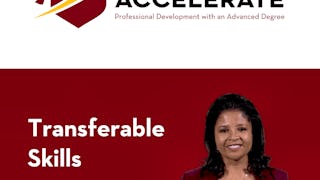Learn how to identify the enablers and barriers to learning transfer. Use your own experience to categorise the processes and activities involved in learning and transferring that learning into practice. There are many criteria against which the success of training and development activities can be judged. One of the most important, however, is learning transfer. Ultimately, the success of any given training and/or development program is reflected in whether or not what is learned is applied on the job. Organisations - and indeed trainees themselves - invest large amounts of time, effort, and resources in work-related training and generally expect to see this manifested in some way back in the work setting (e.g. as observable changes to how work is conducted). However, many organisations and their people view the likelihood of transfer of training more in hope than expectation. This course will show you how to approach the goal of improving learning transfer in your organisation.

Enjoy unlimited growth with a year of Coursera Plus for $199 (regularly $399). Save now.

Introduction to Learning Transfer and Life Long Learning (3L)


Instructors: Mike Smith
7,644 already enrolled
Included with
(231 reviews)
Skills you'll gain
Details to know

Add to your LinkedIn profile
4 assignments
See how employees at top companies are mastering in-demand skills

There are 4 modules in this course
Learn how to identify the enablers and barriers to learning transfer. Use your own experience to categorise the processes and activities involved in learning and transferring that learning into practice. There are many criteria against which the success of training and development activities can be judged. One of the most important, however, is learning transfer. Ultimately, the success of any given training and/or development program is reflected in whether or not what is learned is applied on the job. Organisations - and indeed trainees themselves - invest large amounts of time, effort, and resources in work-related training and generally expect to see this manifested in some way back in the work setting (e.g. as observable changes to how work is conducted). However, many organisations and their people view the likelihood of transfer of training more in hope than expectation. This course will show you how to approach the goal of improving learning transfer in your organisation.
What's included
2 videos2 readings
Reflecting upon and reviewing your own experience attending a training programme, the time line technique enables you to understand all the stages in the design and delivery of a learning intervention and places you back in the seat of a learner. In reviewing the three phases of learning transfer (before, during, and after the learning intervention), you will be able to isolate the significant contributions that enable you to be fully effective and efficient in transferring your learning.
What's included
3 videos4 readings1 assignment
Research in learning transfer has accelerated over the last 10 years as business, healthcare, and education have been questioning whether their investment in learning and development is bearing fruit. Learning transfer is not something that happens only at the end of a learning process; the ability to transfer is vested in every stage and requires an understanding of not only what we learn but how we learn.
What's included
7 videos7 readings1 assignment
Among the many factors that influence learning transfer, 16 make up the Learning Transfer System Inventory as established by Professor Ed Holton and his research team. These factors are categorised under three headings: capability, motivation, and work environment. This module describes these factors (and the corresponding categorizations) and how they affect the likelihood of success of a learning intervention.
What's included
15 videos15 readings2 assignments
Instructors

Offered by
Explore more from Business Essentials
 Status: Free Trial
Status: Free TrialUniversity of Minnesota
 Status: Free Trial
Status: Free Trial Status: Preview
Status: PreviewAccenture
 Status: Preview
Status: PreviewUniversity of Leeds
Why people choose Coursera for their career




Learner reviews
231 reviews
- 5 stars
71.42%
- 4 stars
16.45%
- 3 stars
7.79%
- 2 stars
2.59%
- 1 star
1.73%
Showing 3 of 231
Reviewed on Jan 12, 2023
Great course. Reinforcement of what I have been fighting for in Learning & Development.
Reviewed on May 14, 2020
Really informative course... 100 percent worth doing it..
Reviewed on Aug 15, 2021
Awesome Course . Really helpful for applying learning to Day to Day operation

Open new doors with Coursera Plus
Unlimited access to 10,000+ world-class courses, hands-on projects, and job-ready certificate programs - all included in your subscription
Advance your career with an online degree
Earn a degree from world-class universities - 100% online
Join over 3,400 global companies that choose Coursera for Business
Upskill your employees to excel in the digital economy
Frequently asked questions
To access the course materials, assignments and to earn a Certificate, you will need to purchase the Certificate experience when you enroll in a course. You can try a Free Trial instead, or apply for Financial Aid. The course may offer 'Full Course, No Certificate' instead. This option lets you see all course materials, submit required assessments, and get a final grade. This also means that you will not be able to purchase a Certificate experience.
When you purchase a Certificate you get access to all course materials, including graded assignments. Upon completing the course, your electronic Certificate will be added to your Accomplishments page - from there, you can print your Certificate or add it to your LinkedIn profile.
Yes. In select learning programs, you can apply for financial aid or a scholarship if you can’t afford the enrollment fee. If fin aid or scholarship is available for your learning program selection, you’ll find a link to apply on the description page.
More questions
Financial aid available,

